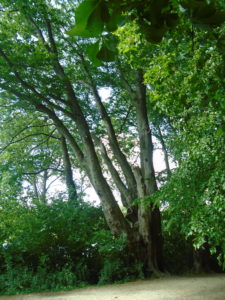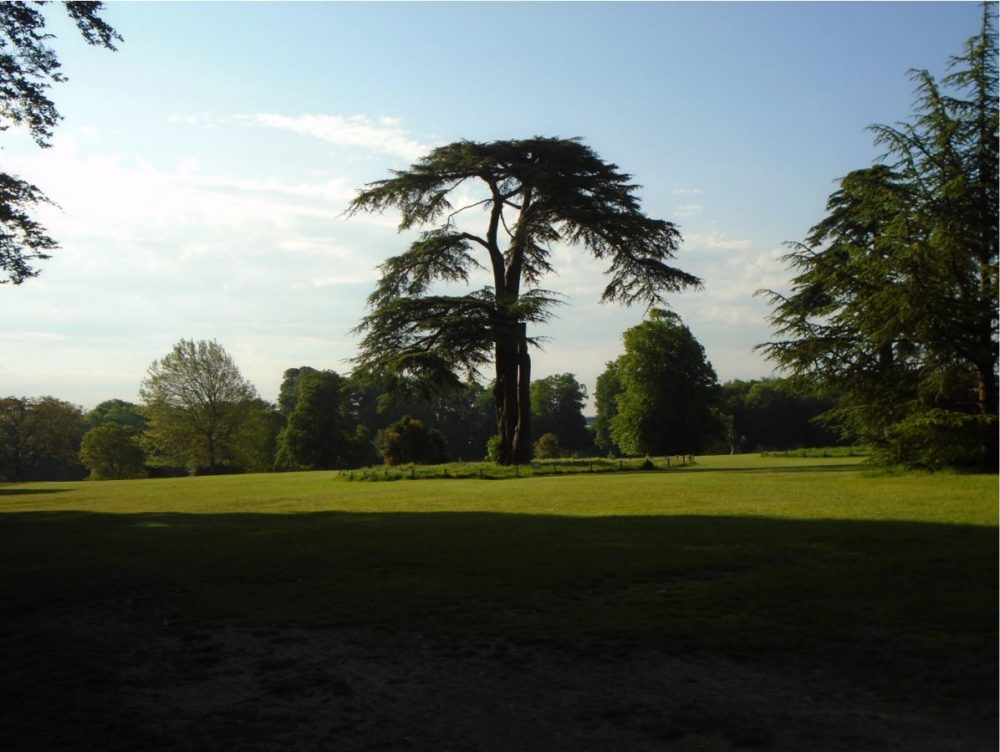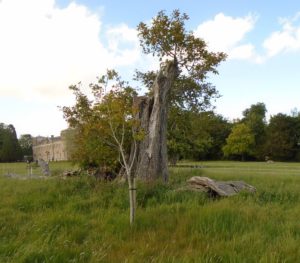Lydiard Woodland
Calling all runners and walkers – those who dart and dash or meander and mooch around Lydiard Park. How much do you know about the parkland?
When Swindon Corporation bought Lydiard House and 147 acres of parkland in 1943 it also acquired woodland of oak, chestnut, sycamore, elm and alder, trees which mostly continue to survive today.
When John (Jack) St John remodelled Lydiard House in the 18th century, he also reordered the parkland, sweeping away the old fashioned, formal 17th century features and creating a popular, more natural landscape. Generations of the St John family used the estate as a holiday home, enjoying the country pursuits of hunting, fishing and shooting.
The woodland area behind the lake was created for sporting pursuits and retains the name The Pheasantry where gamebirds were reared for the shooting season.
Crossing the Chinese Bridge with the Spring Plantation to your left, you are now approaching the Quarr Plantation. The 19th century Ordnance Survey maps describe this as a two-acre area of woodland. Today you will discover the St John Hollow, a private function space tucked away in this reclaimed part of the woodland where a children’s playpark stood some thirty years ago. The hollow was originally the site of a small estate quarry.
Further into the woodland you will come across the Ice House, a state of the art, 18th century mod con and a fashionable addition to the St. Johns parkland. Ice was gathered from the lake in winter and stored in the brick lined underground pit. The state-of-the-art Cap and Dome ice house not only helped to preserve meat that would otherwise have been salted, but allowed the Lydiard House cook to prepare the new, novelty dessert, ice cream.
The largest area of woodland within the park itself flanks the Avenue, fifteen acres of mature trees either side of the sweeping driveway up to the House. Here you will discover the Jungle Parc, a tree-top adventure playground for children and adults.
Coming out of the woods you will arrive at the front lawn with two spectacular cedar trees, today carefully observed for signs of decay or damage. The Cedar of Lebanon was a particularly popular tree when the stately home owners of England redesigned their estates in the 18th century.
Sadly, a neighbouring walnut tree which may have stood on the front lawn for more than 300 years, predating the remodelling of the estate in the mid-18th century, was felled during stormy weather one December night in 2013. But, four years later Mike Critchley from Haydon Wick contacted staff at the park and revealed he had a walnut sapling grown from fallen fruit from the damaged tree. This has been planted close to the original tree and is growing well. Meanwhile, local craftsman Simon Webb has produced high quality ballpoint pens using some of the timber, creating a fitting memorial to the grand old tree.
In 1984 Thamesdown Borough Council bought an additional 113 acres of land, bringing the total Lydiard Park holding to 260 acres. Included in the new acquisition were a few acres of land known as Alder Plantation. Parkrunners will be familiar with the route around this area, now better known as the events fields. Having crossed the bridge by the Ash Plantation the parkrun course continues with the Alder Plantation on the right, before joining the path alongside Park Copse.
So, is that it for the surviving Lydiard estate woodland? Not quite. The park entrance at Hay Lane now sees this ancient thoroughfare diverted through the Prinnels housing estate where it becomes Tregoze Way. But turn left and continue along what remains of the old Hay Lane and you will pass Crow Brake, awash with bluebells from April through to May.
You can read more about the veteran trees in Lydiard’s historic landscape.


